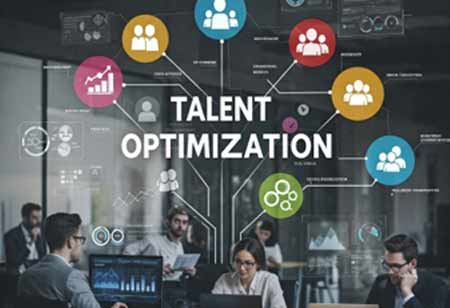THANK YOU FOR SUBSCRIBING
Be first to read the latest tech news, Industry Leader's Insights, and CIO interviews of medium and large enterprises exclusively from Hrtech Outlook
THANK YOU FOR SUBSCRIBING

By
HR Tech Outlook | Friday, April 18, 2025
Stay ahead of the industry with exclusive feature stories on the top companies, expert insights and the latest news delivered straight to your inbox. Subscribe today.
Aligning talent with strategic goals and fostering a collaborative culture allows organizations to optimize their workforce for success in a changing business environment.
Fremont, CA: Talent optimization is a vital strategy for organizations aiming to align their workforce with long-term objectives, fostering individual growth and overall business success. Companies need to understand both their current workforce capabilities and future needs to implement this strategy effectively. Regular assessments of the organization's strategic direction and employee skills help identify critical skill gaps. By deploying talent strategically, organizations can ensure their teams are prepared to tackle existing demands and seize future opportunities.
Continuous Development and Performance Management
Businesses must prioritize the development of employees to stay competitive. Initiatives for upskilling and reskilling are vital for cultivating an adaptable workforce ready to meet evolving challenges. Creating personalized development plans ensures employee growth mirrors individual career aspirations and organizational needs. Moreover, effective performance management plays a crucial role in talent optimization.
More dynamic feedback systems are gradually replacing traditional annual reviews. Regular performance evaluations and clear, measurable goals allow employees to understand how their contributions align with the company's strategic objectives. Adopting a strengths-based approach to performance management, which emphasizes employee strengths rather than weaknesses, fosters confidence and motivation among team members.
Fostering a Collaborative Culture
A collaborative and inclusive workplace is fundamental to optimizing talent. Diverse teams encompassing various experiences and perspectives drive innovation and perform better. Promoting cross-functional collaboration enhances the skill sets of employees and improves problem-solving abilities. Open communication across all levels of the organization ensures that employees feel heard, leading to increased engagement and cohesive teamwork. Diversity and inclusion initiatives are crucial for attracting and retaining top talent and fostering a dynamic and competitive workforce.
In today's data-driven world, leveraging technology for informed decision-making is critical in talent optimization. HR platforms with people analytics tools provide valuable insights into employee performance, engagement, and development needs. These resources enable organizations to make more informed choices regarding hiring, talent deployment, and career progression. Predictive analytics, in particular, can help identify emerging skill shortages and forecast future workforce requirements. Moreover, integrating artificial intelligence into recruitment processes can streamline operations by pinpointing candidates whose strengths align with the company's culture and goals.



